Yerkes-Dodson Stress Model
- The Underdog
- Mar 20
- 1 min read
Updated: Mar 28
Cheat Sheet
Stress isn’t the enemy—it’s fuel. But like any fuel, too little and you stall, too much and you burn out. The Yerkes-Dodson Model shows that stress follows a bell-curve: a sweet spot where pressure makes you sharper, but beyond that, it wrecks your performance.
Developed by psychologists Robert Yerkes and John Dodson in 1908, the model was based on experiments showing how arousal impacts learning and performance—a concept still relevant today

The Three Stress Zones

Low Stress (Bored & Unfocused)
No pressure = No drive.
You’re coasting, disengaged, and not pushing forward.
Optimal Stress (The Sweet Spot)
Just enough challenge to keep you sharp, motivated, and performing at your best.
This is where growth happens.
High Stress (Crash & Burn)
Overload kicks in → Anxiety, exhaustion, bad decisions.
Hustling too hard? You’ll grind yourself into the ground.
How to Use This to Win
Find Your Zone – Pay attention to when stress boosts or wrecks your game.
Work Smarter, Not Just Harder – Push when needed, but don’t glorify burnout.
Protect Your Energy – Take intentional breaks before you hit the wall.
Stress & Performance Tracker
Use this card to track your stress levels and performance daily. Identify patterns to optimize productivity and prevent burnout.
Date | Task/Activity | Stress Level (1-10) | Performance Level (1-10) | Notes |
|---|---|---|---|---|
03/21/2025 | Finalizing the prototype demo | 8 | 6 | 3 days behind schedule + Hardware issues !!! Short walk helped. Stress > 7 = drop in output |
コメント